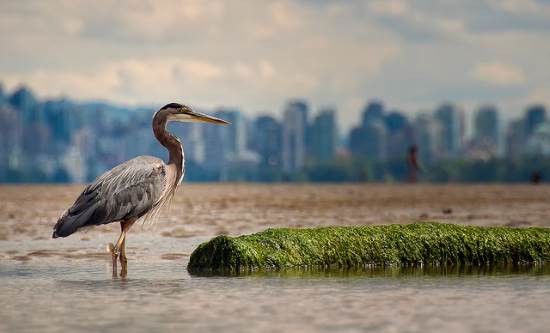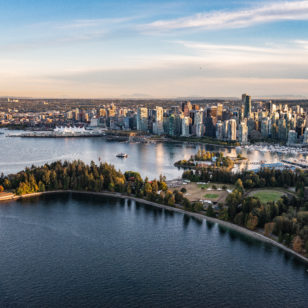
James Wheeler | Flickr
Vancouver’s best nature show is better than ever! The Vancouver Park Board Heron Cam—installed last year—has now been improved to provide better and clearer close-up views of the Pacific great blue herons.
The heron cam at vancouver.ca/HeronCam takes viewers inside the nests of one of North America’s largest urban great blue heron colonies until the end of the summer breeding season. These herons are a species at risk in Canada and the Stanley Park colony is a vital part of the south coast population. One-third of great blue herons worldwide live around the Salish Sea.
“The new and improved Heron Cam will provide ultimate close-ups of at risk Pacific great blue herons, and a continued rare opportunity for urbanites to connect with nature. The camera was wildly popular last year with almost 100,000 views of the herons’ courtship, mating rituals, nest building and egg-laying,” said Vancouver Park Board Chair Sarah Kirby-Yung.
The newly installed HD camera provides greatly enhanced optical and digital capability for live viewing of the Stanley Park heron colony. The close-up views of these magnificent birds are twelve times better and clearer than with the Park Board’s first generation heron camera. Viewers can take control of the camera for short periods of time and zoom into specific nests, as well as ask questions of a biologist via Twitter using the hash tag #HeronTalk.
In February 2016, the Park Board approved a comprehensive Biodiversity Strategy to guide ongoing work to protect and expand natural areas throughout the city. The enrichment of habitat for urban wildlife, such as the herons, is fundamental to the Biodiversity Strategy.
Heron Cam also supports the Vancouver Bird Strategy, providing education and celebrating the city’s birds.
Heron Cam is a collaborative effort between the Park Board and Stanley Park Ecology Society (SPES).
Maria Egerton, Conservation Projects Manager at SPES said: “We’re really excited to use this new technology to get an even more intimate view of herons. This unique angle provides another opportunity to collect data for our heron monitoring program.”
Last year, the colony’s nest success was the highest since 2007. Based on monitoring data, it is estimated the colony produced 175 fledgling herons in 2015.
The herons returned again in early February to the trees near 2099 Beach Avenue for the 16th consecutive year. The first eggs of the season are expected to hatch in early April. The herons lay two to five eggs, which incubate for 28 days. Herons leave the colony by late August and disperse to local feeding grounds, such as Lost Lagoon, False Creek, the Fraser River and the shoreline of English Bay.
The gates of the fenced areas below the heronry are secured to reduce disturbances to the colony and protect passers-by from falling debris. Wrap-around barriers were applied to the nest trees to discourage predators, such as raccoons, from disturbing nests. Dog owners are reminded to keep pets leashed around the colony.
SPES has an Adopt a Heron Nest program which supports efforts to educate, monitor and maintain the great blue herons and protect their home in Stanley Park.
*Note: Chrome is recommended when viewing the Heron Cam

















Pingback: Connecting to Nature – Stanley Park Nature House | Canada
Pingback: Connecting to Nature – Stanley Park Nature House – Gunboat Bay Lodge